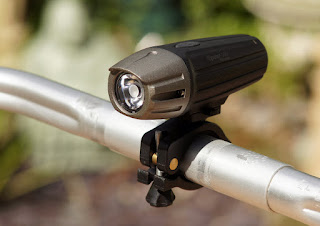Autumn has progressed, with a
much wetter flavour. Local authorities/highways departments are scrambling to
patch battle-scared tarmac, while climate, conditions and budgets permit.
Temporary traffic-light
control; raised ironworks and roughly lain tarmac is certainly testing rider
skill, wheel build quality and tyre casings. 15 months on, my Halo White
Line/Shutter Precision PD8 dynohub build https://www.sevendaycyclist.com/halo-rim-and-shutter-dynohub-disc-b
could do with a quick tweak of its spoke tension.
John Moss (who built the
wheel) has kindly offered to whip it on his jig, while I’m on an East Midlands
mission. I’ll swap over to the Halo Evura/SL9 https://www.sevendaycyclist.com/halo-evura-shutter-precision-sl9-dy
for a couple of weeks (and may take that
route). I’ve switched to my Univega and getting some serious mileage on those
Schwalbe Marathon Mondial tyres.
These continue to impress with
their smooth, compliant personalities. On and sans asphalt. True, they have a
puncture repelling rating of 6, whereas the 365’s are 7. However, rolling
resistance is vastly superior, and I’ll be very surprised should I flat in the
coming months.
The “Motor Oil Challenge is
working out, as I envisaged, 200 miles in. So far, a decent amount of 5w40
still clings to my fixed’s stainless steel chain. I’m anticipating at least 400
before replenishment’s required.
My Univega’s electroplated
chain is more accommodating of lubes generally, so I’m wondering if I can sneak
past the 500mile mark, on a single helping. Assuming a 9/10spd chain is good
for 1100 miles, potentially two helpings of motor oil could last its lifespan. River
riding, snowy, slushy conditions will put a dent in this, dictating more
frequent top-ups.
Of course, price is not the
only determinant when considering lubricants. I’m particularly fond of waxy ceramic
types, which, when cured, are relatively dry to touch and generally maintenance
free. Much nicer, when tackling a rear puncture/similar road/trailside
mechanical.
I’m firmly of the little n’
often approach when it comes to maintenance and servicing. Tuning and replacing
stuff as I go, rather than having set schedules. Nonetheless, I always ensure
seat posts, headsets and pedals are liberally greased-twice yearly. Not to
mention those little fasteners- mudguard, rack and bottle bosses.
As we hurtle closer to winter,
I’m thinking of retiring my fixed gear winter/trainer’s stainless-steel chain.
Leaning toward something galvanised…May even plump for another, slightly lower
fixed sprocket. Note to self…Remember to baste the hub’s threads with a
luxuriously ceramic, grease!
Lithium based preps, commonly
used in automotive contexts, are cheap and fine, if mating metals of similar
parentage i.e. steel with steel, 7005 series aluminium alloys etc. Problem is,
they’ll gobble rubberised components, including seals.
I much prefer a stout ceramic,
such as White Lightning Crystal grease. https://www.sevendaycyclist.com/white-lightning-crystal-grease
Green Oil Eco-Grease https://www.sevendaycyclist.com/green-oil-ecogrease-long-ter-test
is a surprisingly stocky, non-toxic
alternative. Staying prowess is good. I’m
happy using it on contact points and indeed, headsets/bottom brackets, provided
the bike(s) in question are running full-length mudguards.
Reliability and convenience
are key, when it comes to enjoying winter. Treating framesets and components a
liberal waxing and treating bikes to weekly sudsy bucket washes (cold water
rinses first, to remove road salt and similar caustic stuff) is another sound
idea.
This will lock the elements
out, making it harder for gloop to stick and subsequent washing easier. Time
poor riders, may find a system, such as Green Clean MX is the way forward https://www.sevendaycyclist.com/pro-green-mx-triple-pack
These are also available singularly, and I’m particularly endeared to the Cycle
Shine. This can be applied to a freshly washed (and rinsed) bike. No buffing or
polishing required, simply allow it to cure naturally.
Post wash; quick squirts of
“maintenance” spray, to cables and mechanisms, should keep them happy and
dependable. Not everyone has time, or the inclination to do their own
maintenance/servicing.
That’s when a good mobile
mechanic, or local bike shop is worth their weight in gold. If you’re in the
Tendring area, Justin Burls now offers servicing and repairs, alongside his
bespoke titanium bikes/framesets http://www.burls.co.uk/sandr.html









































